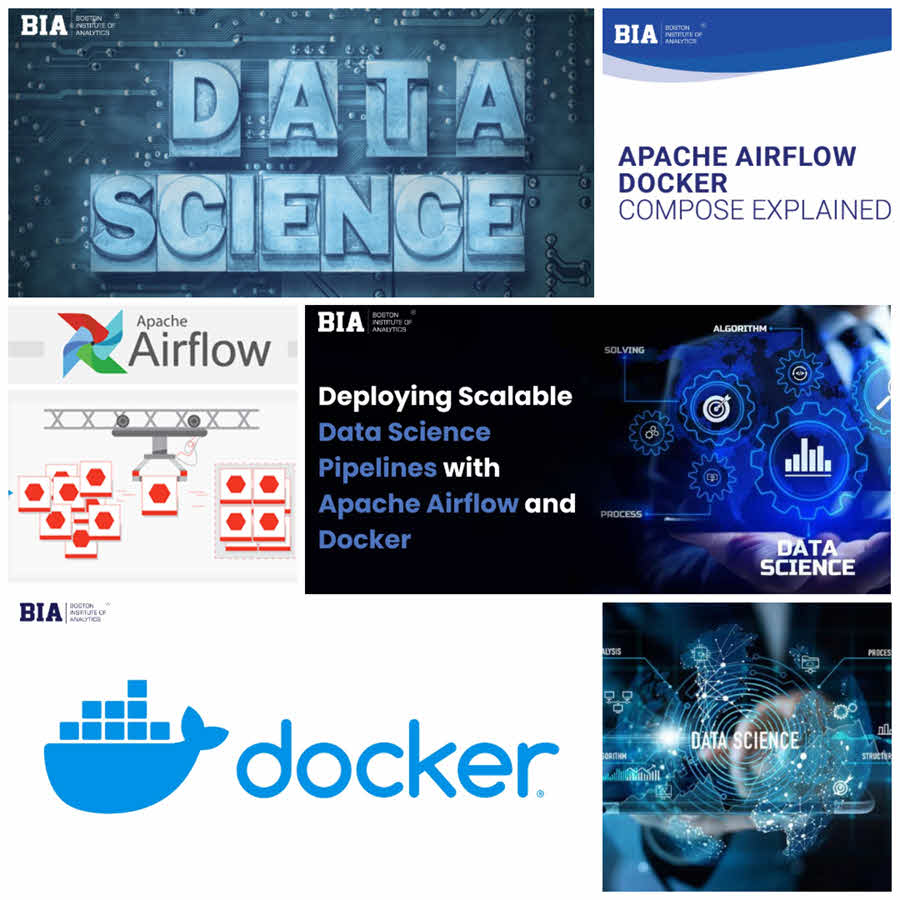
Deploying Scalable Data Science Pipelines with Apache Airflow and Docker
Last updated: December 07, 2025 Read in fullscreen view
- 25 Nov 2025
 How AI Agents Are Redefining Enterprise Automation and Decision-Making 27/42
How AI Agents Are Redefining Enterprise Automation and Decision-Making 27/42 - 01 Jul 2025
 The Hidden Costs of Not Adopting AI Agents: Risk of Falling Behind 17/108
The Hidden Costs of Not Adopting AI Agents: Risk of Falling Behind 17/108 - 07 Nov 2025
 Online vs. Offline Machine Learning Courses in South Africa: Which One Should You Pick? 16/30
Online vs. Offline Machine Learning Courses in South Africa: Which One Should You Pick? 16/30 - 21 Nov 2025
 The Rise of AgentOps: How Enterprises Are Managing and Scaling AI Agents 12/43
The Rise of AgentOps: How Enterprises Are Managing and Scaling AI Agents 12/43 - 06 Nov 2025
 Top 10 AI Development Companies in the USA to Watch in 2026 10/36
Top 10 AI Development Companies in the USA to Watch in 2026 10/36 - 12 Oct 2022
 14 Common Reasons Software Projects Fail (And How To Avoid Them) 10/504
14 Common Reasons Software Projects Fail (And How To Avoid Them) 10/504 - 28 Jul 2025
 Data Modernization for SMBs: Small Steps, Big Impact 9/115
Data Modernization for SMBs: Small Steps, Big Impact 9/115 - 02 Oct 2022
 The Real Factors Behind Bill Gates’ Success: Luck, Skills, or Connections? 8/300
The Real Factors Behind Bill Gates’ Success: Luck, Skills, or Connections? 8/300 - 05 Aug 2024
 Revisiting the Mistake That Halted Japan's Software Surge 6/322
Revisiting the Mistake That Halted Japan's Software Surge 6/322 - 14 Aug 2024
 From Steel to Software: The Reluctant Evolution of Japan's Tech Corporates 6/488
From Steel to Software: The Reluctant Evolution of Japan's Tech Corporates 6/488 - 01 Sep 2022
 Facts Chart: Why Do Software Projects Fail? 6/540
Facts Chart: Why Do Software Projects Fail? 6/540 - 13 Oct 2021
 Outsourcing Software Development: MVP, Proof of Concept (POC) and Prototyping. Which is better? 6/424
Outsourcing Software Development: MVP, Proof of Concept (POC) and Prototyping. Which is better? 6/424 - 20 Jan 2022
 TIGO Self-Organization Practice: Change Management Workflow 6/430
TIGO Self-Organization Practice: Change Management Workflow 6/430 - 08 Nov 2022
 4 tips for meeting tough deadlines when outsourcing projects to software vendor 6/254
4 tips for meeting tough deadlines when outsourcing projects to software vendor 6/254 - 28 Jul 2022
 POC, Prototypes, Pilots and MVP: What Are the Differences? 6/606
POC, Prototypes, Pilots and MVP: What Are the Differences? 6/606 - 31 Aug 2022
 What are the best practices for software contract negotiations? 5/215
What are the best practices for software contract negotiations? 5/215 - 16 Jun 2022
 Rapid Application Development (RAD): Pros and Cons 5/800
Rapid Application Development (RAD): Pros and Cons 5/800 - 05 Mar 2021
 How do you minimize risks when you outsource software development? 5/317
How do you minimize risks when you outsource software development? 5/317 - 07 Oct 2025
 Case Study: Using the “Messaging House” Framework to Build a Digital Transformation Roadmap 5/45
Case Study: Using the “Messaging House” Framework to Build a Digital Transformation Roadmap 5/45 - 24 Dec 2024
 Artificial Intelligence and Cybersecurity: Building Trust in EFL Tutoring 5/144
Artificial Intelligence and Cybersecurity: Building Trust in EFL Tutoring 5/144 - 01 Jan 2024
 The pros and cons of the Centralized Enterprise Automation Operating model 4/165
The pros and cons of the Centralized Enterprise Automation Operating model 4/165 - 06 Mar 2021
 4 things you need to do before getting an accurate quote for your software development 4/615
4 things you need to do before getting an accurate quote for your software development 4/615 - 12 Dec 2021
 Zero Sum Games Agile vs. Waterfall Project Management Methods 4/374
Zero Sum Games Agile vs. Waterfall Project Management Methods 4/374 - 04 Oct 2022
 Which ERP implementation strategy is right for your business? 4/278
Which ERP implementation strategy is right for your business? 4/278 - 28 Nov 2025
 How AI Will Transform Vendor Onboarding and Seller Management in 2026 4/21
How AI Will Transform Vendor Onboarding and Seller Management in 2026 4/21 - 16 Feb 2021
 Choose Outsourcing for Your Non Disclosure Agreement (NDA) 3/150
Choose Outsourcing for Your Non Disclosure Agreement (NDA) 3/150 - 09 Mar 2022
 Consultant Implementation Pricing 3/184
Consultant Implementation Pricing 3/184 - 16 Apr 2021
 Insightful Business Technology Consulting at TIGO 3/376
Insightful Business Technology Consulting at TIGO 3/376 - 20 Jan 2021
 Fail early, fail often, fail cheap, fail safe but always fail forward 3/688
Fail early, fail often, fail cheap, fail safe but always fail forward 3/688 - 18 Jul 2021
 How To Ramp Up An Offshore Software Development Team Quickly 3/516
How To Ramp Up An Offshore Software Development Team Quickly 3/516 - 01 Dec 2023
 Laws of Project Management 3/249
Laws of Project Management 3/249 - 09 Jul 2024
 What Is Artificial Intelligence and How Is It Used Today? 3/216
What Is Artificial Intelligence and How Is It Used Today? 3/216 - 05 Sep 2023
 The Cold Start Problem: How to Start and Scale Network Effects 3/167
The Cold Start Problem: How to Start and Scale Network Effects 3/167 - 22 May 2025
 Role of Self-Service in CRM: Customer & Partner Portals for Automation 3/72
Role of Self-Service in CRM: Customer & Partner Portals for Automation 3/72 - 05 Jun 2025
 How AI-Driven Computer Vision Is Changing the Face of Retail Analytics 2/77
How AI-Driven Computer Vision Is Changing the Face of Retail Analytics 2/77 - 17 Mar 2025
 Integrating Salesforce with Yardi: A Guide to Achieving Success in Real Estate Business 2/141
Integrating Salesforce with Yardi: A Guide to Achieving Success in Real Estate Business 2/141 - 21 Apr 2025
 Agent AI in Multimodal Interaction: Transforming Human-Computer Engagement 2/148
Agent AI in Multimodal Interaction: Transforming Human-Computer Engagement 2/148 - 17 Oct 2025
 MLOps vs AIOps: What’s the Difference and Why It Matters 2/67
MLOps vs AIOps: What’s the Difference and Why It Matters 2/67 - 04 Oct 2023
 The Future of Work: Harnessing AI Solutions for Business Growth 2/258
The Future of Work: Harnessing AI Solutions for Business Growth 2/258 - 01 May 2024
 Warren Buffett’s Golden Rule for Digital Transformation: Avoiding Tech Overload 2/188
Warren Buffett’s Golden Rule for Digital Transformation: Avoiding Tech Overload 2/188 - 21 Aug 2024
 What is Singularity and Its Impact on Businesses? 2/324
What is Singularity and Its Impact on Businesses? 2/324 - 02 Dec 2022
 Success Story: Satsuki - Sales Management Software, back office app for School Subscription Management 2/219
Success Story: Satsuki - Sales Management Software, back office app for School Subscription Management 2/219 - 04 Oct 2021
 Product Validation: The Key to Developing the Best Product Possible 2/295
Product Validation: The Key to Developing the Best Product Possible 2/295 - 17 Jun 2021
 What is IT-business alignment? 2/343
What is IT-business alignment? 2/343 - 28 Oct 2022
 Build Operate Transfer (B.O.T) Model in Software Outsourcing 2/361
Build Operate Transfer (B.O.T) Model in Software Outsourcing 2/361 - 07 Jul 2021
 The 5 Levels of IT Help Desk Support 2/380
The 5 Levels of IT Help Desk Support 2/380 - 11 Nov 2021
 What is an IT Self-service Portal? Why is it Important to Your Business? 2/364
What is an IT Self-service Portal? Why is it Important to Your Business? 2/364 - 10 Apr 2021
 RFP vs POC: Why the proof of concept is replacing the request for proposal 2/254
RFP vs POC: Why the proof of concept is replacing the request for proposal 2/254 - 02 Nov 2021
 [Case Study] Streamlined Data Reporting using Tableau 2/276
[Case Study] Streamlined Data Reporting using Tableau 2/276 - 08 Aug 2022
 Difference between Power BI and Datazen 2/297
Difference between Power BI and Datazen 2/297 - 07 Oct 2022
 Digital Transformation: Become a Technology Powerhouse 1/216
Digital Transformation: Become a Technology Powerhouse 1/216 - 09 Feb 2023
 The Challenge of Fixed-Bid Software Projects 1/191
The Challenge of Fixed-Bid Software Projects 1/191 - 03 Apr 2021
 How digital asset management streamlines your content workflow? 1/312
How digital asset management streamlines your content workflow? 1/312 - 30 Oct 2022
 How Much Does MVP Development Cost in 2023? 1/170
How Much Does MVP Development Cost in 2023? 1/170 - 13 Feb 2021
 Why is TIGOSOFT a software house for Enterprise Application Development? 1/336
Why is TIGOSOFT a software house for Enterprise Application Development? 1/336 - 05 Aug 2024
 Affordable Tech: How Chatbots Enhance Value in Healthcare Software 1/142
Affordable Tech: How Chatbots Enhance Value in Healthcare Software 1/142 - 12 Aug 2024
 Understanding Google Analytics in Mumbai: A Beginner's Guide 1/84
Understanding Google Analytics in Mumbai: A Beginner's Guide 1/84 - 01 May 2023
 CTO Interview Questions 1/296
CTO Interview Questions 1/296 - 29 Oct 2024
 Top AI Tools and Frameworks You’ll Master in an Artificial Intelligence Course 1/328
Top AI Tools and Frameworks You’ll Master in an Artificial Intelligence Course 1/328 - 24 Oct 2025
 AI Agents in SaaS Platforms: Automating User Support and Onboarding 1/52
AI Agents in SaaS Platforms: Automating User Support and Onboarding 1/52 - 06 May 2025
 How Machine Learning Is Transforming Data Analytics Workflows 1/148
How Machine Learning Is Transforming Data Analytics Workflows 1/148 - 17 Mar 2025
 IT Consultants in Digital Transformation /62
IT Consultants in Digital Transformation /62 - 10 Jul 2025
 Building AI-Driven Knowledge Graphs from Unstructured Data /111
Building AI-Driven Knowledge Graphs from Unstructured Data /111 - 10 Nov 2025
 Multi-Modal AI Agents: Merging Voice, Text, and Vision for Better CX /33
Multi-Modal AI Agents: Merging Voice, Text, and Vision for Better CX /33 - 31 Jul 2025
 Top WooCommerce Pre-Order Plugins with Countdown & Discounts /70
Top WooCommerce Pre-Order Plugins with Countdown & Discounts /70 - 27 Aug 2025
 How AI Consulting Is Driving Smarter Diagnostics and Hospital Operations /66
How AI Consulting Is Driving Smarter Diagnostics and Hospital Operations /66 - 15 Aug 2025
 Quantum Technology: Global Challenges and Opportunities for Innovators /56
Quantum Technology: Global Challenges and Opportunities for Innovators /56 - 29 Aug 2025
 How AI Is Transforming Modern Management Science /33
How AI Is Transforming Modern Management Science /33 - 22 Sep 2025
 Why AI Is Critical for Accelerating Drug Discovery in Pharma /53
Why AI Is Critical for Accelerating Drug Discovery in Pharma /53 - 06 Oct 2025
 AI Agents in DevOps: From Automated Runbooks to Self-Healing Pipelines /59
AI Agents in DevOps: From Automated Runbooks to Self-Healing Pipelines /59 - 06 Mar 2024
 [SemRush] What Are LSI Keywords & Why They Don‘t Matter /131
[SemRush] What Are LSI Keywords & Why They Don‘t Matter /131 - 01 Mar 2023
 How do you deal with disputes and conflicts that may arise during a software consulting project? /145
How do you deal with disputes and conflicts that may arise during a software consulting project? /145 - 15 Apr 2024
 Weights & Biases: The AI Developer Platform /170
Weights & Biases: The AI Developer Platform /170 - 19 Oct 2021
 Software development life cycles /628
Software development life cycles /628 - 21 Jun 2021
 6 Useful Tips To Streamline Business Processes and Workflows /515
6 Useful Tips To Streamline Business Processes and Workflows /515 - 03 Nov 2022
 Top questions and answers you must know before ask for software outsourcing /264
Top questions and answers you must know before ask for software outsourcing /264 - 07 Aug 2022
 Things to Consider When Choosing a Technology Partner /249
Things to Consider When Choosing a Technology Partner /249 - 09 Jan 2022
 How to Bridge the Gap Between Business and IT? /163
How to Bridge the Gap Between Business and IT? /163 - 03 Sep 2022
 The secret of software success: Simplicity is the ultimate sophistication /186
The secret of software success: Simplicity is the ultimate sophistication /186 - 20 Nov 2022
 Software Requirements Are A Communication Problem /233
Software Requirements Are A Communication Problem /233 - 06 Nov 2023
 How do you streamline requirement analysis and modeling? /184
How do you streamline requirement analysis and modeling? /184
There is no repudiating that in a data-centric world, making and positioning scalable data science pipelines has become dominant. As organizations grow the size of the data sets they collect and process, the need for robust, reproducible, and scalable workflows becomes dire. Two game changing technologies in this space are Apache Airflow and Docker. Together, the two have afforded data scientists and data engineers the opportunity to automate and package complex workflows.
Whether you are starting out or wanting to scale your current skills, understanding how these two tools can work together can be a very valuable skill for your data science toolbox. And if you are currently thinking about taking a Data Science Course, then this would no doubt be an excellent topic to dive into the depth of theory and develop practical, real-world knowledge and skills.
What Is a Data Science Pipeline?
A data science pipeline is an organized process of steps or activities to move raw data through a series of analysis phases to find insight and support decision making. The data science pipeline is the structure that data scientists follow to quickly, reliably and systematically clean, process, analyze and model data. By taking the time to create a data science pipeline, the data science workflow is naturally distinct, improving efficiency, certainty for all stakeholders and allowing for investment in scaling the data project.
Data Collection
The first phase in the data science pipeline is data collection. This is where the raw data is pulled from databases, APIs, web scrapers, sensors where gauges need to be finalized, or maybe entered manually. This phase is critical. You cannot expect to get good analysis if you do not first get good data, either poor or irrelevant data can fundamentally alter the outcome of the analysis. Depending on the problem being solved, the data could be structured (for example, spreadsheet), semi-structured, or completely unstructured (for example, text or images).
Data Cleaning and Pre-processing
With data in hand, the next phase involves cleaning and pre-processing the data as needed. While the data collection exercise was important, getting the data right in your follow-up processing is even more important. You may need to deal with many things like missing values, duplicates, errors in the data collection process, or data type conversions or manipulations and all the changes in this reworking of your raw data can be important clean up issues for the next phase of your data project.
Exploratory Data Analysis (EDA)
EDA (Exploratory Data Analysis) is when data scientists try to comprehend the patterns, trends, and relationships controlled in the dataset. During this phase, data scientists will use arithmetical summaries and conceptions to gain considerate of the data, identify incongruities and outliers, and generate hypotheses. Additionally, this phase can help determine which variables are most useful and can be used to shape subsequent modeling work.
Feature Engineering
Feature engineering includes the creation of new variables, but also transformations to existing variables, that will help enhance the predictive capabilities of the machine learning model you are using. Possible transformations or creations during feature engineering include: interaction terms, aggregating values, warding off one of the adjacent communities, distinct creator identifier specific to the domain knowledge you have. Models with well-features can often generate significant increases in accuracies.
Model Building
In this phase, the data scientist will choose the algorithms they plan to use in training predictions or classification models, based on the data. Common methodologies include; linear regression, decision trees, random forests, and deep learning. Models will be fit and trained on one portion of the data, and validated on another so that you may assess the model's generalizability.
Model Evaluation and Deployment
After preparation, the model is tested to calculate its accuracy, meticulousness, recall, and other presentation metrics. Once authenticated, the model is deployed into a real-world surroundings where it can provide expectations or automate decisions. Ongoing monitoring ensures the model remains effective over time.
The Need for Scalable Pipelines
In today's digital era, organizations are producing data at a remarkable rate. From customer interactions and social media posts to IoT sensors and transactional data. The size and complexity continue to grow exponentially every day with the volume and velocity of data created. Accommodating this data explosion requires scalable data science pipelines. A scalable pipeline allows for the efficient, reliable, and predictable support of increasing workloads at all stages of the data science process in order to retrieve insights from the data.
Managing Large Volumes of Data
Growth of the organization leads to growth in the data created and collected. Traditional data systems may function well with smaller datasets (i.e. thousands of records), but will be inefficient or fail altogether with larger datasets (i.e. millions or billions of records). Scalable pipelines are designed to take into account the growth of information produced, supporting the organizations operations in processing information with little or no loss in performance and speed. Managing data with large volumes is especially important in verticals such as finance, healthcare, retail, and technology.
Supporting Real-Time and Continuous Data Processing
Real-time data is essential for today's organizations to make fast and accurate decisions about their business. Real-time analytics, monitoring, and automated actions are made possible by scalable pipelines that let data flow continuously through the pipeline. Many use cases (e.g., fraud detection, recommendation engines, predictive maintenance, and supply chain optimization) depend on availability, scalability, and speed of data. An organization on a scalable pipeline benefits from its business partners and its own operational and investment practices moving quickly on real-time knowledge, an advantage if competitors do not.
Enabling Collaboration and Automation
Scalable pipelines are not only advantageous for processing capabilities, but provide scalability for collaboration among data scientists, engineers, analysts, and business users. Scalable pipelines offer automation for the repetitive tasks (data cleaning, data transformation, model training, delivery, and deployment), ensuring there is less manual error, reproducibility, and less time to deliver for the entire team. Thus, building a collaborative and automated environment is essential to provide similar outcomes across teams/projects.
Facilitating Innovation and Experimentation
Data science involves a lot of iteration. Teams frequently find themselves testing different models, tuning parameters, and evaluating new datasets. A scalable pipeline can enable teams to experiment quickly without affecting the entire system. It gives data teams the freedom to explore and make decisions quickly and data-driven. Organizations can iterate and evolve without slowing down when having a scalable architecture.
Introducing Apache Airflow
Apache Airflow is an open-source software for workflow orchestration that enables organizations to author, schedule and monitor workflows programmatically. Originally developed by Airbnb, Airflow has rapidly emerged as one of the top tools on the market due to its flexibility, scalability, extensibility and community support.
Workflow Management Made Easy
Airflow enables users to define workflows as a Directed Acyclic Graph (or DAG). Because a DAG does not have cycles, Airflow allows users to define their tasks with dependencies, and track their execution flow via managed tasks. Workflows are defined in Python - allowing developers to integrate Airflow with any system or application programming interface (API) and providing more control to developers. Tasks can include anything from running a Python script, triggering an API, calling a database with a query, or executing a machine learning model.
Scalable and Reliable Execution
Apache Airflow can scale. A DAG with Airflow can potentially have thousands of tasks, and because tasks can run in parallel, they can be scheduled to be pushed to worker nodes to distribute the load. The Airflow scheduler will manage the timing of when to run the tasks (and in the right sequence based on dependencies before each task execution). The framework itself also has functionality to retry failed tasks, and has built-in logging and monitoring - so it's typically not too difficult to locate failed tasks and fix the issue.
Key Features of Apache Airflow
- Dynamic Pipelines: Written in Python, allowing customization
- DAG Visualization: Built-in UI for tracking pipeline runs
- Scheduler: Executes tasks on a set schedule
- Integration: Works with Google Cloud, AWS, Spark, Hive, and more
- Retries & Alerts: Robust error-handling mechanisms
Airflow excels in establishing workflows that span crosswise multiple tasks and systems. For instance, you can generate a DAG to extract data from an API, convert it, store it in a database, and then train a machine learning model—all in one scheduled workflow.
Introducing Docker
Docker is the framework that automates the placement, scaling, and organization of applications using containerization. Containers are lightweight, portable packages that bundle an application with all its dependencies, libraries, and configuration files so that the application can run in any computing environment.
Simplifying Development and Deployment
Docker sets up development within containers. The containers remove the familiar and often heard phrase "it works on my machine" by ensuring that the application behaves the same way on any system-a developer's laptop, test server, or production environment. This consistency trains the developer life cycles all the way from coding to deployment, through testing.
Lightweight and Scalable
While virtual machines would have been heavier in such an arrangement, unlike the Docker container scenario, the OS of a host system is shared among containers, and that makes containers lighter and much more efficient. Developers want to run several containers all at once on their development machines. Docker smartly achieves this without hogging resources. Docker is also very nice in terms of integration with orchestration tools like Kubernetes for the management and scaling of containers in big, distributed systems.
Key Features of Docker
- Environment Consistency: Avoids “it works on my machine” problems
- Lightweight & Fast: Faster than virtual machines
- Portability: Move containers across dev, test, and production environments
- Scalability: Easily replicate containers to scale up workloads
When paired with Airflow, Docker can isolate tasks into containers, allowing better resource control, security, and reproducibility.
Why Combine Apache Airflow and Docker?
The marriage of Apache Airflow and Docker renders the operational aspects of data workflows into a simple and scalable process. Apache Airflow gives one full control with powerful tools for scheduling, orchestrating, and monitoring complex pipelines, and Docker complements it by making sure that these workflows run in an associated manner regardless of an environment.
Ensuring Environment Consistency
Deploying Airflow demands configurations, Python packages, and system dependencies; hence, setting Airflow up without Docker across various computers leaves one with version mismatching issues and incompatibility. Docker, in a containerized form, runs Airflow with all said dependencies, making for one and the same environment while working locally or going through testing and production.
Simplified Deployment and Scalability
This approach of launching Airflow components, like the scheduler, web server, and workers, as Docker containers provides for a modular way of deploying. Modular deployment facilitates scaling and resource management, especially when distributed. The team might spin up or spin down a container at will, thus coping with the requirements for heavy duty jobs or enhanced flexibility.
Improved Collaboration and Maintenance
With Docker, teams can share pre-configured Airflow surroundings finished Docker images, manufacture on boarding and partnership easier. It also improves maintainability, as apprising or rolling back versions becomes more manageable.
Benefits of Using Airflow with Docker
- Modularity: Each task in Airflow can run in its own Docker container.
- Reproducibility: Ensures consistent environments across tasks.
- Isolation: Prevents dependency conflicts between tasks.
- Scalability: Easily spin up containers for parallel task execution.
- Portability: Move your pipeline from local dev to cloud with minimal changes.
Together, they create an ecosystem for building reliable, repeatable, and scalable workflows.
Building a Scalable Pipeline: A Step-by-Step Guide
Developing a climbable data science pipeline is critical to effectively work with large amounts of data while being trustworthy and allowing rapid experimentation and disposition. An effective data science pipeline will facilitate end-to-end data flow from collection all the way to deployment, applying analytics and producing insights while ensuring that models perform reliably in production environments and tracked for future deployment and usage.
Defining the Objective and Scope
The first consideration in developing a scalable data pipeline, and critical to its success, is establishing a clear business objective. Whether the objective is to enhance customer experience, detect fraud or model demand, comprehending the business objective will guide what type of data is needed, what model is most appropriate, and how to measure what success looks like. Understanding the problem space and scoping the project will help make sure that the pipeline is developed in sync with business needs and not over-engineered, or worse, under-utilized.
Data Collection and Integration
After developing a business goal and scoping the project, data will need to be sourced from various databases, APIs, flat files, third-party applications, streaming platforms, etc. A scalable data science pipeline will support both batch and streaming ingestion, and with this, poised to manage increasing volumes and velocities of data. Getting data into a data lake or centralized database will help ensure consistency for comprehensive analysis and accessibility.
Data Pre-processing and Feature Engineering
After collecting the data it is cleaned and transformed, including missing values, format normalization, and encoding categorical data. Feature engineering is used to generate meaningful inputs for the model. These steps should be automated using reusable scripts or workflows to make the process repeatable and scalable.
Model Training and Evaluation
Next, Machine Learning models are created and trained using the clean, prepared the data, and may use hyper parameter tuning and cross-validation for model selection. A scalable pipeline should allow for concurrent training of multiple models, and may allow for versioning as well, letting teams test several paths efficiently. Models are selected based on their evaluation metrics.
Deployment and Monitoring
After selecting a final model, it is deployed in the production environment where it can generate predictions in real-time, or on a set calendar basis. The deployment of the model should also be automated via CI/CD pipelines to deliver fast level changes and eliminate as many opportunities for implementation errors as possible. Monitoring tools can then be used to track model performance, data drift, and system health to allow for alerting and intervention and continual improvement.
Final Thoughts
In a world of big data and machine learning, scaling pipelines is a necessity, rather than an option, to be successful. Apache Airflow and Docker enable effortlessly and reliably building, maintaining and scaling complex, production-ready data science pipelines.
As a new professional to the industry, learning these new tools will definitely fast-track your career trajectory. Consider taking a Data Science Course that emphasizes building applications using modern toolsets, so you feel confident and proficient when dealing with production data systems in the future.

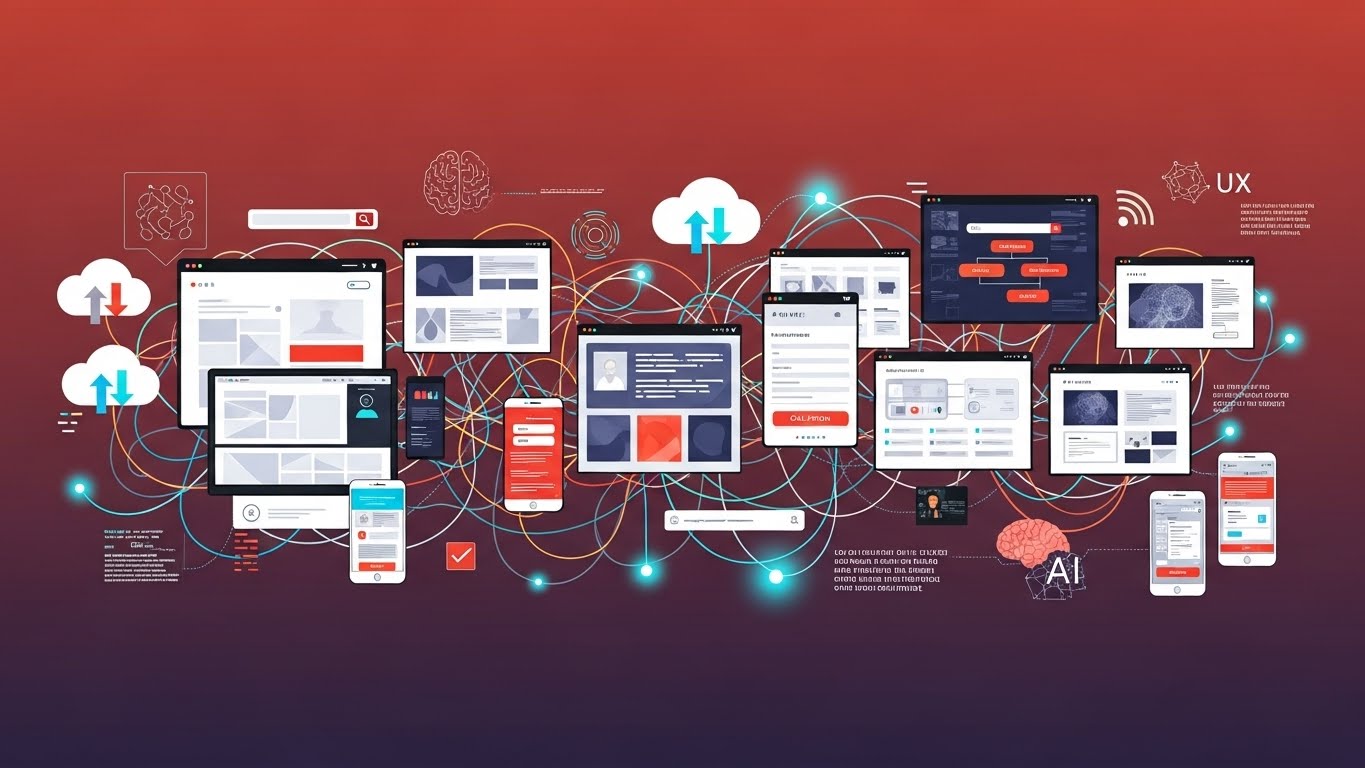











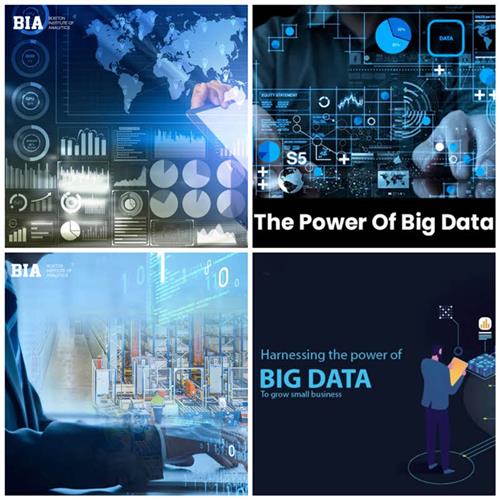



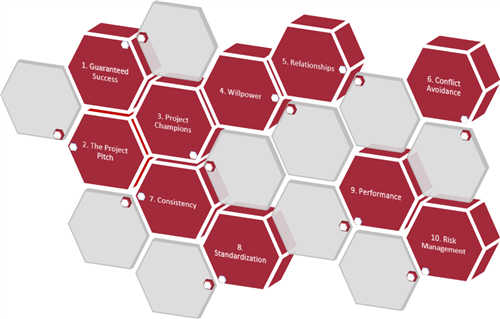
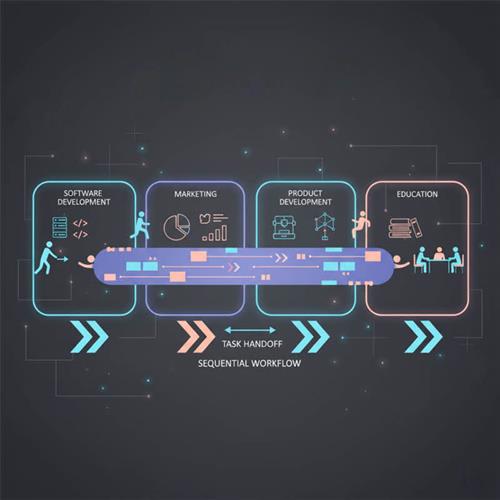




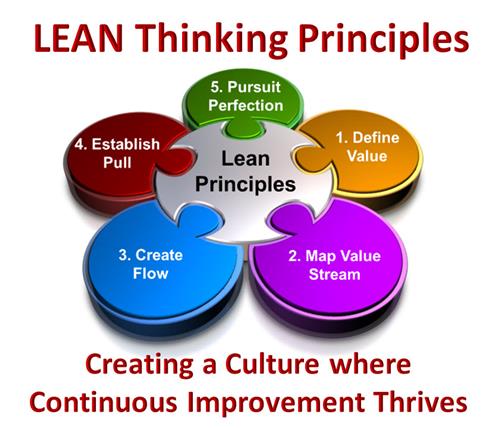









 Link copied!
Link copied!
 Recently Updated News
Recently Updated News